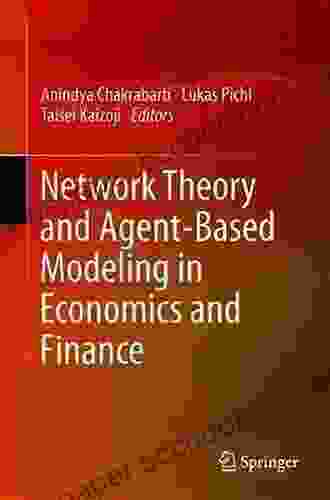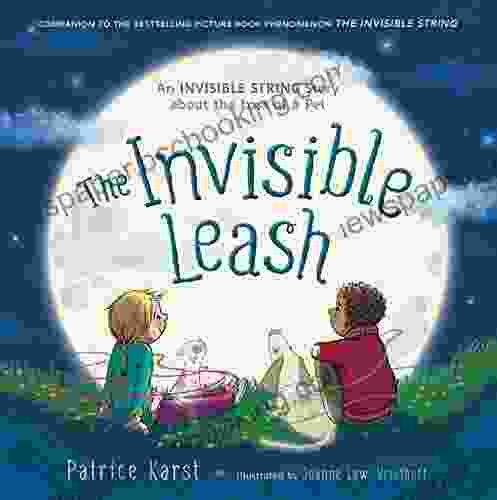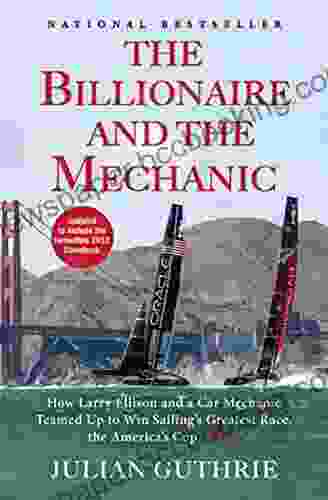Network Theory and Agent-Based Modeling in Economics and Finance: A Comprehensive Guide

Network theory and agent-based modeling (ABM) are two powerful tools that have revolutionized the study of economics and finance. Network theory provides a framework for understanding the interactions between individuals and institutions, while ABM allows researchers to simulate the behavior of complex systems in a dynamic environment. This article provides a comprehensive overview of both network theory and ABM, and their applications in economics and finance.
Network Theory
Network theory is the study of the structure and function of networks. Networks are made up of nodes (which can represent individuals, institutions, or other entities) and edges (which represent the connections between nodes). Networks can be used to represent a wide range of phenomena, including social networks, economic networks, and financial networks.
5 out of 5
| Language | : | English |
| File size | : | 79761 KB |
| Text-to-Speech | : | Enabled |
| Screen Reader | : | Supported |
| Enhanced typesetting | : | Enabled |
| Word Wise | : | Enabled |
| Print length | : | 791 pages |
Key Concepts in Network Theory
- Nodes: The basic building blocks of networks. Nodes can represent any type of entity, including individuals, institutions, or objects.
- Edges: The connections between nodes. Edges can be directed or undirected, and they can be weighted or unweighted.
- Degree: The number of edges that are connected to a node. The degree of a node can be used to measure the node's importance in the network.
- Clustering coefficient: A measure of the interconnectedness of a node's neighbors. A high clustering coefficient indicates that a node's neighbors are also likely to be connected to each other.
- Path length: The shortest path between two nodes in a network. The path length can be used to measure the distance between nodes in the network.
Applications of Network Theory in Economics and Finance
Network theory has been used to study a wide range of economic and financial phenomena, including:
- Social networks: The study of social networks has been used to understand how social interactions affect economic outcomes, such as job search and innovation.
- Economic networks: The study of economic networks has been used to understand how economic interactions, such as trade and investment, affect economic growth and development.
- Financial networks: The study of financial networks has been used to understand how financial institutions interact with each other, and how these interactions can lead to financial crises.
Agent-Based Modeling
Agent-based modeling (ABM) is a computational method that simulates the behavior of complex systems. ABMs are made up of a collection of agents, which are autonomous entities that can interact with each other and with their environment. ABMs can be used to simulate a wide range of phenomena, including the spread of disease, the evolution of ecosystems, and the behavior of financial markets.
Key Concepts in Agent-Based Modeling
- Agents: The basic building blocks of ABMs. Agents can be any type of entity, including individuals, institutions, or objects.
- Interactions: The ways in which agents can interact with each other and with their environment. Interactions can be cooperative or competitive, and they can be direct or indirect.
- Environment: The context in which agents interact. The environment can be static or dynamic, and it can be deterministic or stochastic.
- Emergence: The process by which complex patterns and behaviors arise from the interactions of simple agents. Emergence is a key feature of ABMs, and it allows researchers to study the behavior of complex systems in a way that is not possible with traditional methods.
Applications of Agent-Based Modeling in Economics and Finance
ABM has been used to study a wide range of economic and financial phenomena, including:
- Financial markets: ABMs have been used to simulate the behavior of financial markets, including the stock market and the bond market.
- Economic growth: ABMs have been used to simulate the process of economic growth, including the role of innovation and investment.
- Financial crises: ABMs have been used to simulate the causes and consequences of financial crises, including the global financial crisis of 2008.
Network theory and agent-based modeling are two powerful tools that have revolutionized the study of economics and finance. Network theory provides a framework for understanding the interactions between individuals and institutions, while ABM allows researchers to simulate the behavior of complex systems in a dynamic environment. These tools have been used to study a wide range of economic and financial phenomena, and they are likely to continue to be used to gain new insights into the complex world of economics and finance.
About the Book
The book Network Theory and Agent-Based Modeling in Economics and Finance provides a comprehensive overview of both network theory and ABM, and their applications in economics and finance. The book is written by a team of leading experts in the field, and it is essential reading for anyone who wants to understand the latest advances in this rapidly growing field.
The book is divided into two parts. The first part provides an to network theory, including the key concepts of nodes, edges, degree, clustering coefficient, and path length. The second part provides an to ABM, including the key concepts of agents, interactions, environment, and emergence.
The book is well-written and accessible, making it suitable for readers with a variety of backgrounds. It is also richly illustrated with diagrams and figures, which help to explain the complex concepts discussed in the text.
Network Theory and Agent-Based Modeling in Economics and Finance is an essential resource for anyone who wants to understand the latest advances in this rapidly growing field. The book provides a comprehensive overview of both network theory and ABM, and it is written by a team of leading experts in the field.
Free Download Your Copy Today!
You can Free Download your copy of Network Theory and Agent-Based Modeling in Economics and Finance today by clicking on the link below.
Free Download Now!
5 out of 5
| Language | : | English |
| File size | : | 79761 KB |
| Text-to-Speech | : | Enabled |
| Screen Reader | : | Supported |
| Enhanced typesetting | : | Enabled |
| Word Wise | : | Enabled |
| Print length | : | 791 pages |
Do you want to contribute by writing guest posts on this blog?
Please contact us and send us a resume of previous articles that you have written.
 Book
Book Novel
Novel Page
Page Chapter
Chapter Text
Text Story
Story Genre
Genre Reader
Reader Library
Library Paperback
Paperback E-book
E-book Magazine
Magazine Newspaper
Newspaper Paragraph
Paragraph Sentence
Sentence Bookmark
Bookmark Shelf
Shelf Glossary
Glossary Bibliography
Bibliography Foreword
Foreword Preface
Preface Synopsis
Synopsis Annotation
Annotation Footnote
Footnote Manuscript
Manuscript Scroll
Scroll Codex
Codex Tome
Tome Bestseller
Bestseller Classics
Classics Library card
Library card Narrative
Narrative Biography
Biography Autobiography
Autobiography Memoir
Memoir Reference
Reference Encyclopedia
Encyclopedia Karen Mcquestion
Karen Mcquestion Laurie David
Laurie David Jun Maeda
Jun Maeda Karen S Roberts
Karen S Roberts Karla Valenti
Karla Valenti Kamilla Reid
Kamilla Reid Julie S Snyder
Julie S Snyder Rylie Dark
Rylie Dark Waltraud Suzuki
Waltraud Suzuki Julius Caesar
Julius Caesar Remy Stern
Remy Stern June Emerson
June Emerson Naomi Moriyama
Naomi Moriyama Kate Morss
Kate Morss Kate Barrows
Kate Barrows Sven Nordqvist
Sven Nordqvist Liz Wiseman
Liz Wiseman Ryan Kane
Ryan Kane Marcus Malloy
Marcus Malloy Mary Healy
Mary Healy
Light bulbAdvertise smarter! Our strategic ad space ensures maximum exposure. Reserve your spot today!

 Arthur C. ClarkeEmbark on a Thrilling Journey into the Cyber Realm with "Adventures in...
Arthur C. ClarkeEmbark on a Thrilling Journey into the Cyber Realm with "Adventures in... Ruben CoxFollow ·8.1k
Ruben CoxFollow ·8.1k Rob FosterFollow ·8.1k
Rob FosterFollow ·8.1k Thomas PynchonFollow ·14.8k
Thomas PynchonFollow ·14.8k Todd TurnerFollow ·12.4k
Todd TurnerFollow ·12.4k Patrick HayesFollow ·15.5k
Patrick HayesFollow ·15.5k Duncan CoxFollow ·14.9k
Duncan CoxFollow ·14.9k Brennan BlairFollow ·17.5k
Brennan BlairFollow ·17.5k Devin RossFollow ·14.7k
Devin RossFollow ·14.7k
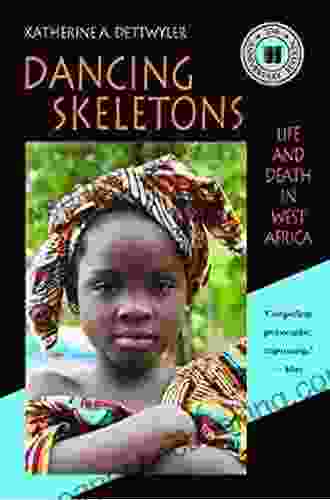
 Drew Bell
Drew BellLife and Death in West Africa: A Groundbreaking Account...
A Journey Through...
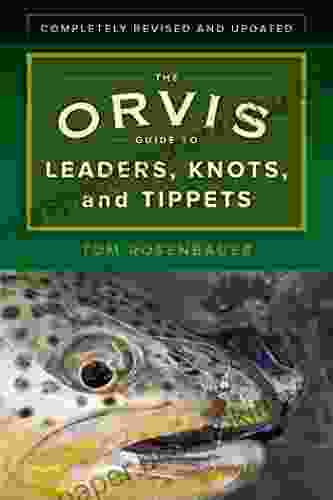
 Stanley Bell
Stanley BellMaster the Art of Fly Fishing Line Management: A...
Are you an avid fly...

 Ernest Powell
Ernest PowellUnleash Your Entrepreneurial Spirit: A Comprehensive...
In the competitive...

 Derrick Hughes
Derrick HughesMaster Your Ride: The Ultimate Guide to Road Bike...
Are you ready to elevate your cycling...

 Camden Mitchell
Camden MitchellUnveiling the Enchanting World of American Royals III:...
Embark on a Captivating Royal Saga: American...
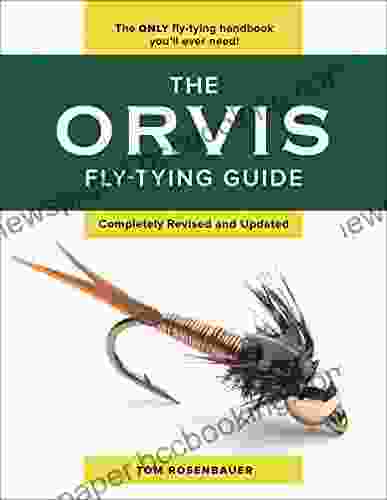
 Richard Simmons
Richard SimmonsUnveiling the Secrets of Fly Tying: A Comprehensive...
In the realm of...
5 out of 5
| Language | : | English |
| File size | : | 79761 KB |
| Text-to-Speech | : | Enabled |
| Screen Reader | : | Supported |
| Enhanced typesetting | : | Enabled |
| Word Wise | : | Enabled |
| Print length | : | 791 pages |


